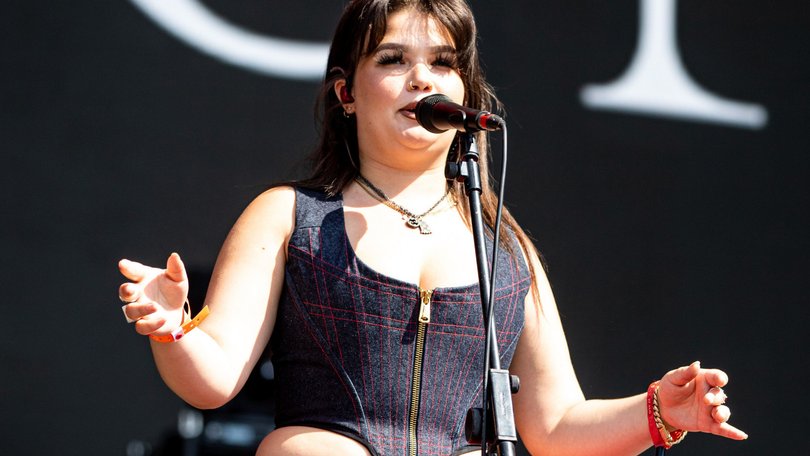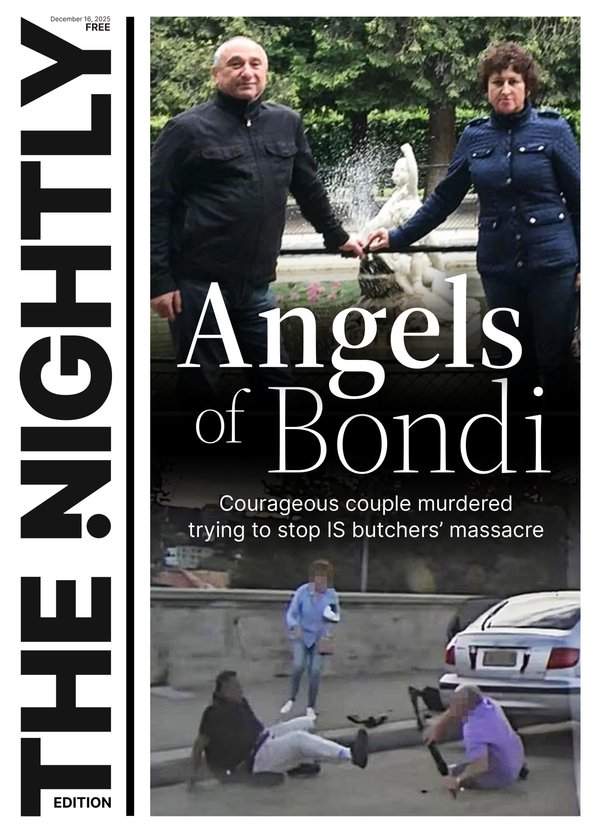THE NEW YORK TIMES: Can a gen-Z Amy Winehouse get big without breaking? Lola Young is trying

It was a summertime Saturday in Paris, but Lola Young was about ready to go home.
The scene, by now, had become routine to the 24-year-old singer: a nondescript trailer behind layers of barricades, where, for months — from Indio, California, to Gdynia, Poland — Young had warmed up and waited before greeting growing music festival crowds that were increasingly singing along to her off-kilter pop songs.
Young’s manager, Nick Shymansky, could sense her edginess, having become ever-attuned to the subtle fluctuations of her brain chemistry since they began working together seven years ago.
Sign up to The Nightly's newsletters.
Get the first look at the digital newspaper, curated daily stories and breaking headlines delivered to your inbox.
By continuing you agree to our Terms and Privacy Policy.“She’s melancholy tonight and I can see it,” he whispered outside her trailer. “I don’t know if she knows it, but I feel it.”
Still, Young and her team knew she had to turn it on. A coveted evening slot at the French edition of Lollapalooza was another in a long string of “I made it!” moments that she had been chasing most of her life.
“It just depends on the day,” Young, still contemplative but slowly brightening, said the next morning on a train to London for a much-needed mini break. “Some days I wake up and I’m just pinching myself. There are other days I wish I wasn’t pinching myself.”
She continued haltingly, not wanting to sound ungrateful. “It’s hard getting a small — it’s not really a small taste, it’s quite a real taste — of some levels of fame, success and money, and all the glitz and glamour that you think you wanted,” Young added.
“I’m [expletive] good at what I do, I worked really hard to be here, some people would die to be in my position, and some days I hate it. That doesn’t feel fair.”
Since breaking out with her too-much anthem “Messy,” a radio smash that grew from TikTok to No. 14 on the Billboard singles chart, Young is vying to become the latest in a growing lineage of young female singers for whom chronic disarray is both a selling point and a relatable, teachable moment, not their ultimate downfall.
As a songwriter whose chief muse is torment (self-imposed, biological, inflicted by rotten men), Young recalls the world-building rawness of recent forebears like Billie Eilish and Chappell Roan, who have studiously taken the previous generations’ sensations-slash-casualties — Alanis Morissette, Britney Spears, Sinead O’Connor, Amy Winehouse — as legacies worth building on and correcting.
But given Young’s history of substance abuse and mental illness (she was diagnosed as a teenager with schizoaffective disorder and ADHD), the balancing act is a daily, if not hourly, undertaking. “I smoke like a chimney / I’m not skinny and I pull a Britney / every other week,” she sings on “Messy.”
Since 2017, Young has worked closely with Shymansky, who managed Winehouse and gave her an ultimatum before her breakthrough album, “Back to Black”: Get clean or do it without me. Winehouse responded by writing “Rehab,” which went platinum, and winning six Grammys before she died of alcohol toxicity in 2011, at 27.
“The whole thing’s completely complex, but of course this is like a dream moment to me,” Shymansky, now 45, said of his second chance with Young. “I’m seeing this person that I deeply care about, that I feel is so special, and I’m getting to be the person I wish I could have been” for Winehouse, he said.
That means riding the rocket ship of fame as slowly and deliberately as possible, even as Young attempts to seize her moment with a new album, “I’m Only Fucking Myself,” out Sept. 19.
Written amid the yearlong rise of “Messy” and Young’s simultaneous attempts to get sober, the album catalogues her “crawling out of my own self-sabotage,” she said, which she has often cut, or “masked,” with eroticism and black humour.
The daughter of a white British mother and a Chinese-Jamaican father who is not part of her life, Young grew up fast in the Beckenham area of southeast London.
One of four sisters, she has the occasional brashness of a compensating street kid but can just as quickly retreat into a mopier, ruminative mode. “I can feel my frontal lobe developing,” Young said in her hallmark tumble of an accent, on a ride through some familiar locales the day after the Paris festival. “It kind of hurts sometimes. I feel the pain of knowing that I’m not quite there yet.”
Over nearly a decade working together, her manager doubles as a protective big brother, cool uncle, guidance counsellor and bemused fogy as needed. “There’s not five hours of my life I don’t get a [expletive] phone call” from the singer, Shymansky said. “And I’m happy to get a phone call. Even if she wasn’t an artist, she’d be one of the most interesting, brilliant people in my life. It’s a dream. And at times, not so much.”
Before “Messy,” Young’s career was a succession of almosts.
But the through line of her strongest work continued to be a plainspoken, sometimes brutal self-assessment: a stream-of-consciousness, run-on download from a wonderfully erratic brain.
“A lot happened with my label, trying to find my brand, how I looked — and what happened in that process is that I started masking through a metaphor,” she said. Then it hit her: “People don’t really seem to be connecting to this.”
Young went through a similar process with her presentation on social media, which eventually helped catapult her to real fame. A few years ago, Shymansky brought on Lily West, a friend of his younger sister, to make honing Young’s visual persona fun. They tried for years to “crack it,” West said.
Eventually, they happened upon a gimmick that worked, bringing attention to Young’s textured voice by putting her behind a huge professional microphone in unlikely locations (a swing, a canoe, a beach) and allowing her to sing live to a backing track.
Young’s music began to make its way to posts by influencers like Kylie Jenner, routinely reaching millions as TikTok’s aesthetic evolved alongside them.
Following up a smash isn’t easy for anyone. For Young and Shymansky, the stakes are even higher.
In November, before recording her new LP at Electric Lady Studios in New York, Young entered a treatment centre for five weeks to address her dependence on cocaine. By the New Year, she was back to the industry rat race, delivering a star turn on the “Tonight Show” couch with Jimmy Fallon and making a much-hyped appearance at Coachella in April, right as “Messy” was peaking.
With some downtime between scheduled appearances this summer, Young had been hoping to take a few weeks to herself before the final promo push for “Myself.” But when Fallon’s team offered a last-minute slot to perform “Dealer” on “The Tonight Show” in late July, an impromptu New York trip was added to the calendar.
It never came to pass. A few days after her return to London, Young relapsed, Shymansky said, and returned to treatment.
With the album’s release date rapidly approaching, Shymansky had given her the option to clear the deck and focus on her health. Young, he said, chose to forge ahead.
As she returned to the stage a few weeks later, Young was joined behind the scenes by a sober coach, and remained surrounded by a team dedicated to protecting her, Shymansky said. Of the parallels in his own life with Winehouse, he said: “You can’t separate it. It’s uncanny.”
This article originally appeared in The New York Times.
© 2025 The New York Times Company
Originally published on The New York Times
